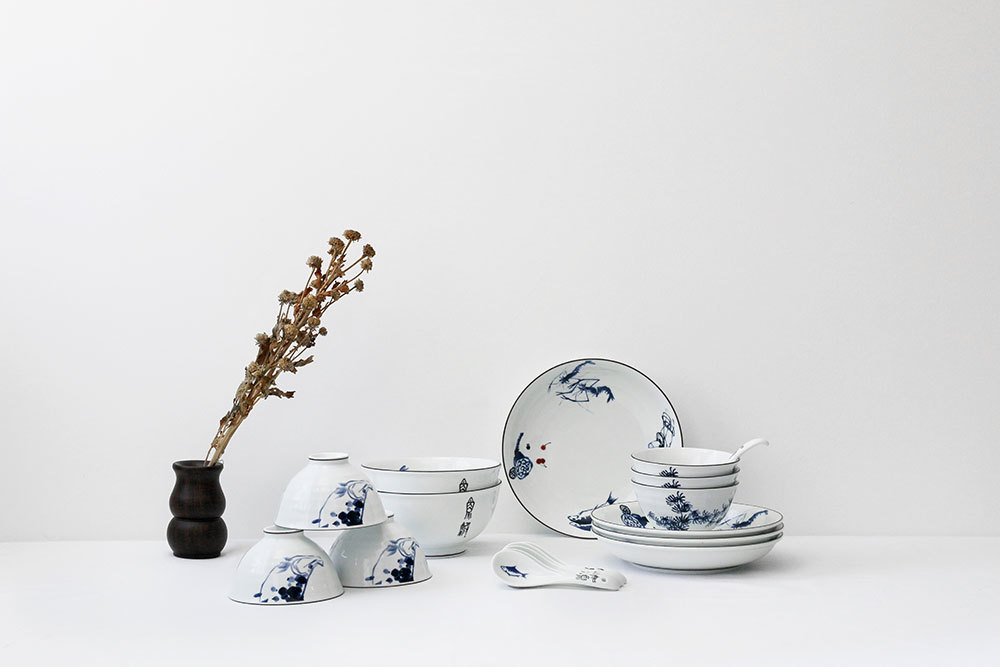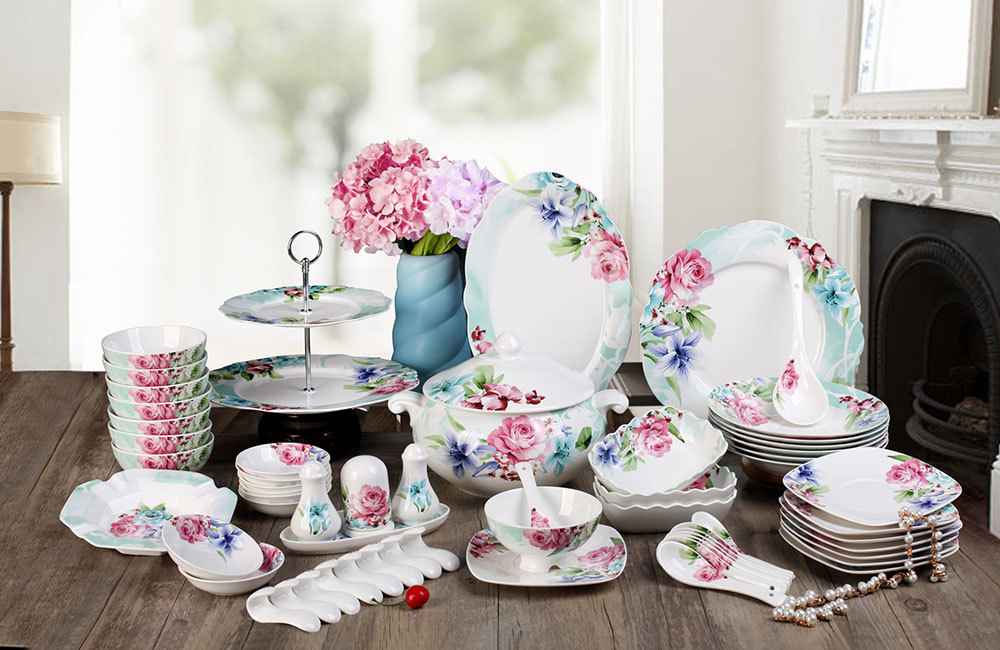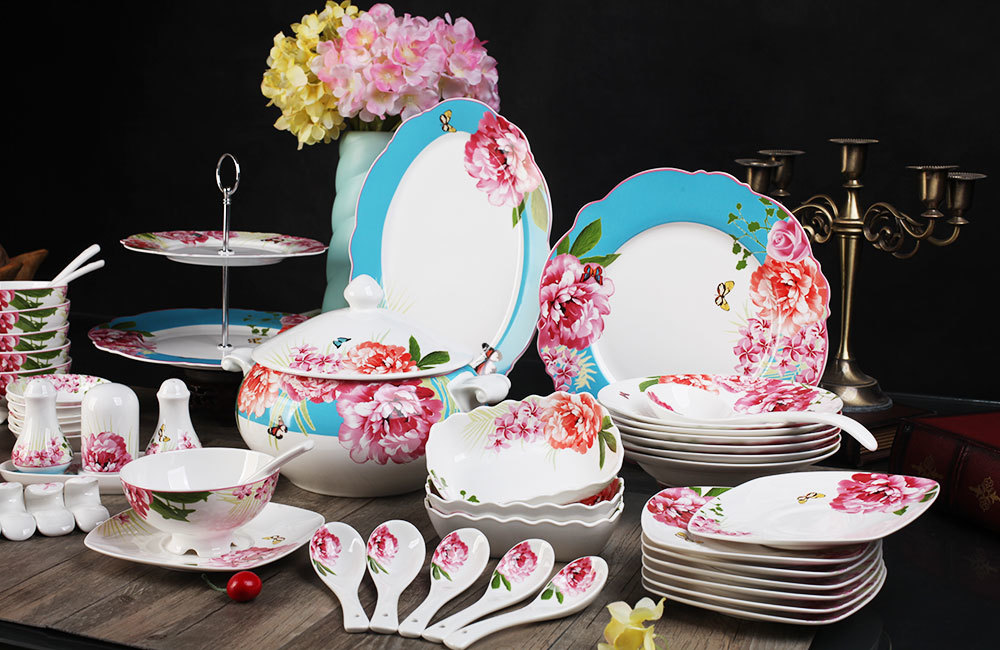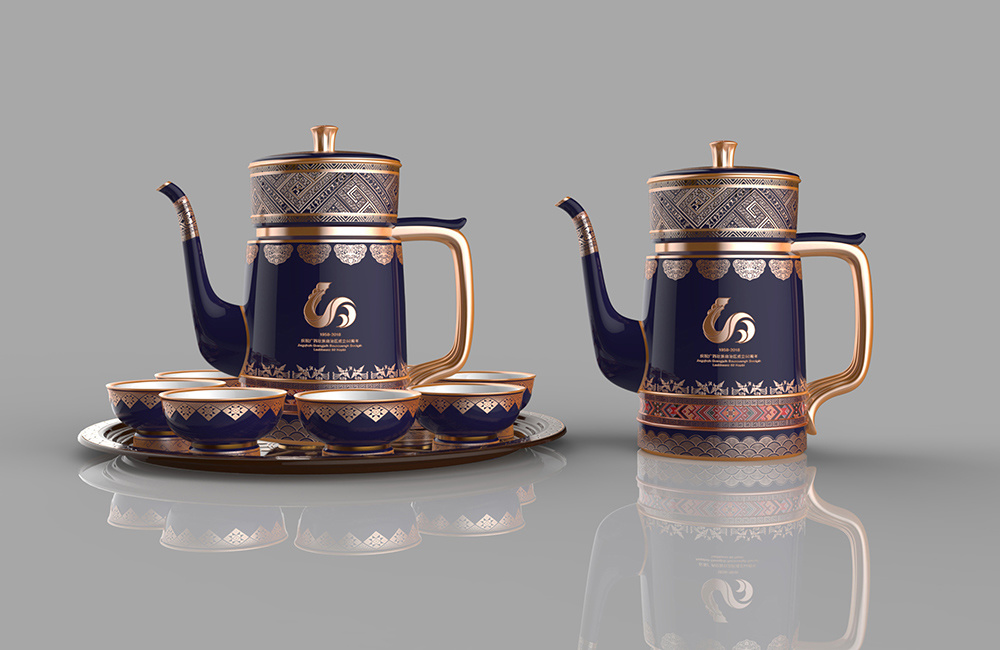The Belt and Road Initiative
Porcelain - "High-temperature hard porcelain" Porcelain developed using feldspar, quartz, and kaolin (clay) as the main materials belongs to the feldspar porcelain category. The materials used in this porcelain are prepared to provide the required blanks for the porcelain. The blanks are formed into the desired shape by rolling (positive pressure) or slip casting, etc. The formed green body is bisque fired at a high temperature (1360-1370) ℃ in a reducing atmosphere, polished and ground three times, then glazed with a layer of glaze, and fired a second time at a medium temperature (1270-1275) ℃ in an oxidizing atmosphere. The resulting porcelain has a light transmittance of 32.1%, glossiness of 110%, good texture, and is crystal clear and white. The glaze is smooth, delicate, soft, has a high mechanical strength of 550 MPa, and good thermal stability. It is a high-end high-temperature porcelain with high light transmittance and a characteristic bluish-white color.
Keywords:
Category:
High permeability
Product Attachment:

Hotline:
The Belt and Road Initiative
Picture and Text Details
Porcelain - "High-temperature hard porcelain"
Porcelain made primarily from feldspar, quartz, and kaolin (clay) belongs to the feldspar porcelain category. The materials used in this porcelain are prepared to provide the necessary body for the porcelain. The body is formed into the desired shape using rolling (positive pressure) or slip casting, etc. The formed greenware is bisque fired in a high-temperature (1360-1370℃) reducing atmosphere, polished three times, then coated with a glassy glaze, and finally fired a second time in a medium-temperature (1270-1275℃) oxidizing atmosphere. The resulting porcelain has a light transmittance of 32.1%, glossiness of 110%, good texture, and a bright white color. The glaze is smooth, delicate, and soft, with high mechanical strength (550 MPa) and good thermal stability. It is a high-end, high-transmittance porcelain with a unique bluish-white characteristic.
Porcelain Decoration - "Underglaze Colors"
According to the design requirements, the porcelain surface decoration is applied using patterned transfer paper as a carrier and fired at (1080-1100) ℃. Using Sanhuan Group's unique temperature control technology, the decorative pattern is quickly sunk into the glassy glaze layer. After rapid cooling, the glassy glaze layer seals the decorative pattern within the glassy glaze layer, hence the name underglaze decoration. After adopting underglaze decoration, the porcelain no longer leaches lead and cadmium, which are harmful to the human body.
The "Belt and Road - ASEAN Community" design created by Sanhuan Group uses China's national flower, the peony, and iconic architectural elements from China and the eleven ASEAN countries as the main elements, supplemented by sailing ships and blue and white auspicious clouds, symbolizing the "Belt and Road" initiative leading China and ASEAN to build a closer community of shared future.
Under the background of the "Belt and Road" initiative, Guangxi, located at the transportation hub of the southward passage to the sea in the southwest region, is not only an important connecting point of the "Maritime Silk Road" but also an important gateway for the construction of the "Silk Road Economic Belt." It is also an important window for cooperation and exchanges between China and ASEAN, and a frontier base for opening up to Southeast Asia.
As an important cultural symbol of Guangxi, Sanhuan Ceramics has been an industry partner of the China-ASEAN Expo since 2004 and has provided state guest gifts for 10 sessions of the expo.
Previous Page
Next Page
Previous Page
Next Page
Related Products





